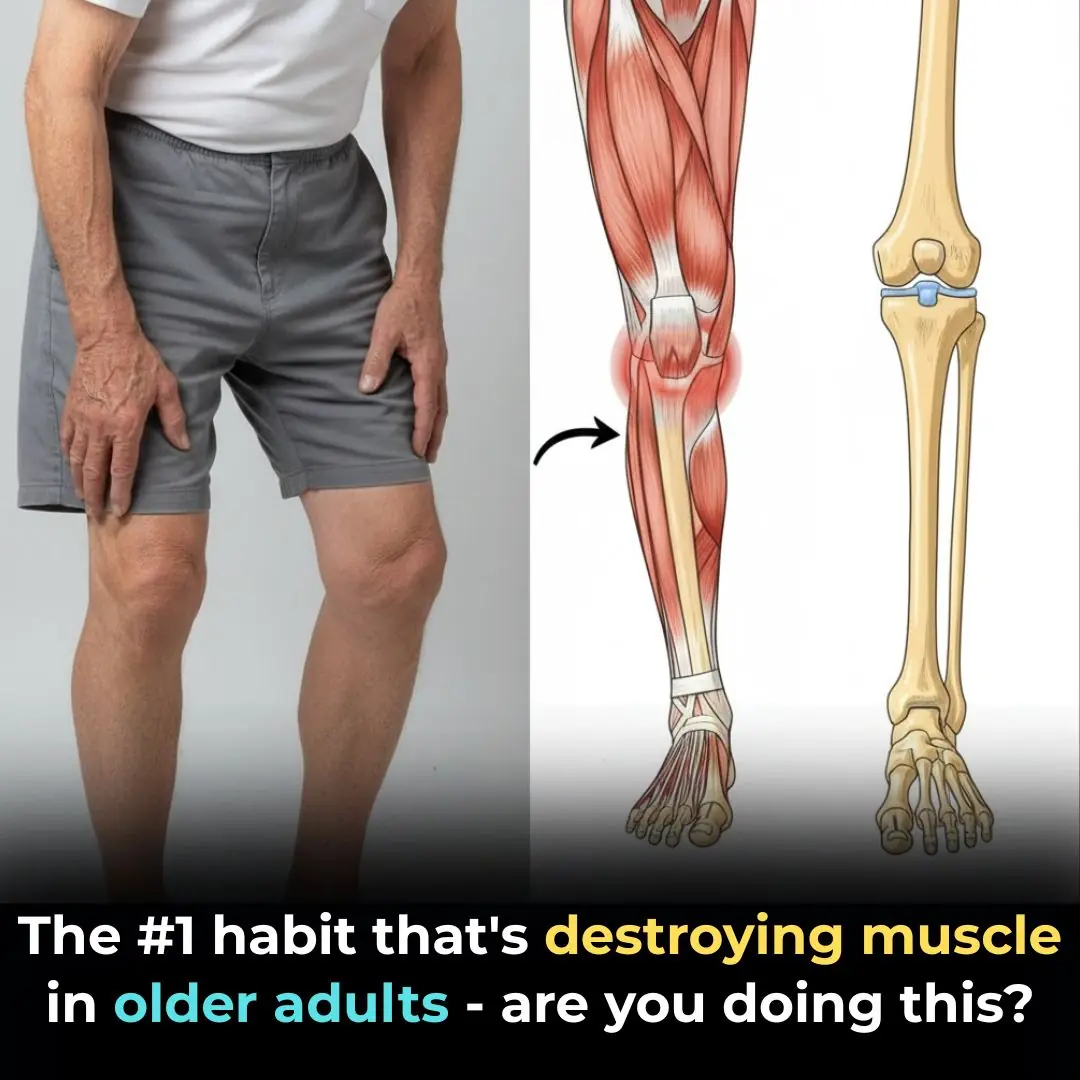
A neurosurgeon says your legs could predict dementia years before memory loss

What if the secret to keeping your brain sharp and warding off dementia wasn’t hidden in crosswords, Sudoku, or memory apps—but in your legs?
It sounds unexpected, but a growing body of research—and the warnings of one leading neurosurgeon—suggest that the path to cognitive decline may begin not in the brain, but in the lower body. According to Dr. Arun L. Naik, a distinguished neurosurgeon, “Dementia may start in your legs, not your brain.” His insight underscores a groundbreaking truth: the strength and vitality of your legs could determine how well your mind ages.
As global populations live longer, dementia has become one of the most urgent public health challenges of our time, robbing millions of memory, independence, and identity. We’re constantly encouraged to “train the brain” with puzzles and new skills, but mounting evidence reveals that keeping your body active—especially your legs—may be one of the most effective brain-protection strategies available.
Let’s explore the fascinating connection between your muscles and your mind, uncover the powerful biology linking movement and memory, and lay out a practical roadmap to walk—literally—toward better brain health.
Key Takeaways
-
Weak Legs, Weaker Brain: The loss of leg strength and muscle mass (sarcopenia) correlates with a faster decline in cognitive function and an increased risk of dementia.
-
The BDNF Connection: Active leg muscles release Brain-Derived Neurotrophic Factor (BDNF)—a “fertilizer” for neurons that supports memory, learning, and overall brain resilience.
-
Walking as a Brain Workout: Every step activates complex neural networks, improving blood flow, oxygenation, and waste clearance in the brain.
-
Gait as an Early Warning Sign: Changes in walking speed, balance, or stride may signal early brain changes, often appearing years before memory loss.
-
You Can Change the Outcome: Consistent leg-strengthening habits—like walking, squats, and balance exercises—can significantly reduce dementia risk, even if started later in life.
1. The Hidden Threat: How Muscle Loss in Your Legs Affects Your Brain
When we picture aging, we often think of wrinkles or gray hair—but one of the most profound changes happens silently within your muscles. This process, known as sarcopenia, refers to the gradual loss of muscle mass and strength that accelerates with age. It tends to hit the large muscles of the legs first, often leading to slower walking, trouble climbing stairs, or difficulty rising from a chair.
While sarcopenia might seem like a mobility issue, it’s also a neurological one. Research now shows a clear correlation: as leg strength diminishes, so does brain function. Weak muscles mean less movement—and less movement means reduced stimulation to the brain. Your leg muscles are actually endocrine organs, releasing a cocktail of beneficial hormones and proteins during activity. When you stop moving, that powerful communication network between your body and brain begins to fade.
This isn’t just about fitness—it’s about brain preservation. Physical inactivity leads to poorer circulation, higher inflammation, and lower oxygen delivery, all of which quietly erode cognitive function over time.
2. BDNF: The “Miracle-Gro” for Your Brain—Powered by Your Legs
Picture a nutrient that helps your brain grow, repair, and stay young. That’s Brain-Derived Neurotrophic Factor (BDNF), a remarkable protein often called “Miracle-Gro for the brain.” BDNF nourishes neurons, strengthens synaptic connections, and encourages neurogenesis—the creation of new brain cells, especially in the hippocampus, the region responsible for memory and learning.
So, how do you increase BDNF naturally? The answer is simple: move your legs.
When you walk, climb stairs, or perform squats, your leg muscles send biochemical signals that boost BDNF production, which then travels through the bloodstream to your brain. There, it enhances memory circuits, promotes mental clarity, and shields your brain from degenerative changes.
In other words, every step acts as a signal to your brain to stay young.
Regular leg activity has even been shown to raise dopamine and serotonin levels, improving mood and motivation—two key factors in maintaining long-term cognitive health.
3. Walking: The Most Underrated Full-Brain Workout
Dr. Naik puts it succinctly: “Walking is not just a physical task—it’s a full-brain workout.”
Although it feels automatic, walking requires intricate communication between the frontal lobes, cerebellum, basal ganglia, spinal cord, and sensory systems. Your brain constantly plans, adjusts, and balances each step. It processes input from your feet and joints (proprioception), evaluates terrain, and maintains equilibrium—all in fractions of a second.
That’s why even a short daily walk can spark a cascade of brain benefits. Walking increases blood flow, delivers oxygen and nutrients, and helps flush out metabolic waste like beta-amyloid, a toxic protein linked to Alzheimer’s disease.
In fact, neuroimaging studies have shown that older adults who walk regularly have larger hippocampi and better memory scores compared to their sedentary peers.
4. Gait as a Crystal Ball: How Your Walking Style Predicts Brain Health
Pay attention to how you move—it may reveal more than you think.
A 2018 meta-analysis in the Journal of Neurology, Neurosurgery & Psychiatry found that a slower walking speed is significantly associated with higher dementia risk. Intriguingly, these changes often appear years before any noticeable memory decline.
Subtle alterations in gait—like shorter steps, imbalance, or hesitation—may indicate underlying neural changes such as reduced brain volume or white matter integrity. Researchers now view gait analysis as a promising early biomarker for dementia, much like blood pressure readings are for heart disease.
Simply put, your walk can serve as a window into your brain’s future.
If you or someone you love starts walking more slowly or feels less steady, it’s not just a mobility issue—it’s a cue to take action now.
5. Action Plan: How to Build a Dementia-Resistant Brain
The link between movement and memory is clear—but what can you do about it?
Here’s Dr. Naik’s practical blueprint to strengthen both your legs and your mind:
-
Make Walking Non-Negotiable: Commit to at least 30 minutes of brisk walking daily. Choose a pace that elevates your heart rate but still allows conversation. This level optimizes circulation and BDNF release.
-
Train Your Balance: Balance exercises protect against falls and stimulate brain regions tied to spatial awareness. Try standing on one foot for 30 seconds, heel-to-toe walking, or gentle yoga poses like Tree Pose.
-
Try Dual-Task Walking: Combine movement with mental challenges—recite song lyrics, solve math problems, or name animals alphabetically while walking. This multitasking approach strengthens executive function and memory recall.
-
Add Strength Training: Twice a week, perform basic lower-body exercises: squats, lunges, step-ups, or calf raises. These build “cognitive insurance,” helping your muscles continue sending beneficial signals to your brain.
-
Break the Sitting Cycle: Long sitting sessions restrict blood flow and dull brain activity. Set a timer to stand, stretch, or move every 45–60 minutes. Even two minutes of movement can reawaken your circulation and focus.
6. Never Too Late to Take the First Step
If you’re in your 50s, 60s, or even 70s, you might wonder if it’s too late to make a difference.
Science says: absolutely not. Studies show that even people who start exercising later in life can dramatically reduce dementia risk. Your brain remains adaptable—a trait called neuroplasticity—which means it can form new neural connections and strengthen existing ones at any age.
So start small. Walk to the corner. Take the stairs. Try gentle squats or leg lifts while holding onto a chair. Every bit of movement signals your brain to stay active, alert, and alive.
The Bottom Line: Your Legs Hold the Key to Your Mind
The old belief that brain and body health exist separately no longer holds up.
Modern science is clear: strong legs support a strong brain.
By prioritizing physical activity—especially leg strength and mobility—you’re not just building endurance; you’re actively nourishing your brain and protecting your memories, personality, and independence.
So don’t wait for cognitive decline to start before acting.
Start moving today. Step by step, you’re walking toward a sharper, stronger, and more resilient mind.
News in the same category


How Cancer Travels Through the Lymphatic System—and Ways to Keep It Strong

How to Make Alkaline Water to Fight Fatigue, Digestive Issues, and Disease

Your Legs Have a “Second Heart” — And One Simple Move Can Reactivate It Fast

Simple Homemade Cough Syrup Removes Phlegm From The Lungs

The B vitamin solution: lower blood pressure when medications fail

The #1 habit that’s destroying muscle in older adults—are you doing this?

The Hidden Consequences of a S*xless Life

This carb is more damaging to your blood sugar than pure sugar

DIY Under-Eye Clove Cream for Dark Circles

The Powerful Juice That Fights Anemia, Fatty Liver, and Blurry Vision Naturally

Remove Bad Odors from Your Refrigerator Overnight with These Simple Tricks

Castor Oil After 50: This Is What Happens After 7 Days Of Use!

Mix One Ingredient With Orange Juice To Flush Toxic Buildup From The Lungs

Drink one cup daily of this juice to UNCLOG arteries?

MISTAKE #1 WHEN CHEWING CLOVES (YOUR HEALTH IS IN DANGER)

Just tried to stop my daughter from doing this

Found this weird skin on my son's ear this morning. Doc appt is a week away. What can I do?

3 Common Mistakes People Make When Eating Avocados
News Post

5 Early Signs of Poor Circulation (and How to Boost Blood Flow)

How Cancer Travels Through the Lymphatic System—and Ways to Keep It Strong

How to Make Alkaline Water to Fight Fatigue, Digestive Issues, and Disease

Your Legs Have a “Second Heart” — And One Simple Move Can Reactivate It Fast

Don't throw away expired milk, keep it for 7 great benefits, help save a lot of money

How to make lemon syrup with a rice cooker to help treat coughs and nourish the lungs

Don't rush to put lemons in the fridge when you buy them. Do this so they stay fresh all year round and don't get bitter or spoiled.

Tips to unclog drains in 5 minutes, removing hair and dirt without calling a plumber

Ancient Herbal Remedy to Clear Mucus from Nose, Throat, and Lungs in Just 2 Days

Seniors: Take This for 5 Nights and See What Comes Out in Your Stool!

Simple Homemade Cough Syrup Removes Phlegm From The Lungs

The B vitamin solution: lower blood pressure when medications fail

Meet The Owner Of The First Beauty Supply In New Paltz, New York

R&B Singer Lucky Daye Has Full-Circle Moment with MLK Day Halftime Performance

Meet Alvin Irby, One of Pepsico’s Black Changemakers Who’s Using Barbershops To Encourage Black Boys To Read More

Meet Charlie Mitchell, The First Black Michelin-Starred Chef In New York City And The Second One In The Nation

This Mom of Four Just Started Medical School at 43 Years Old

The #1 habit that’s destroying muscle in older adults—are you doing this?
